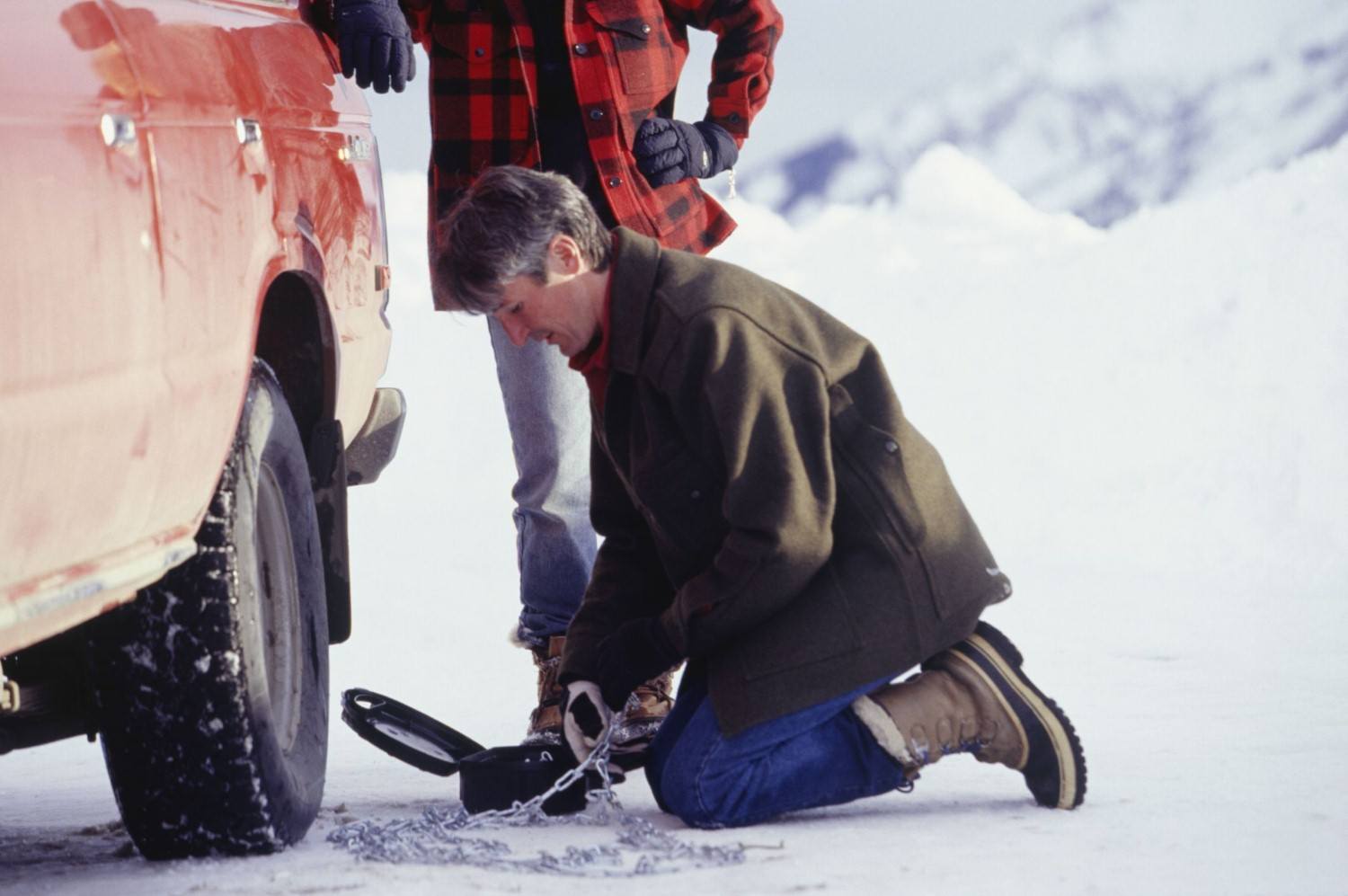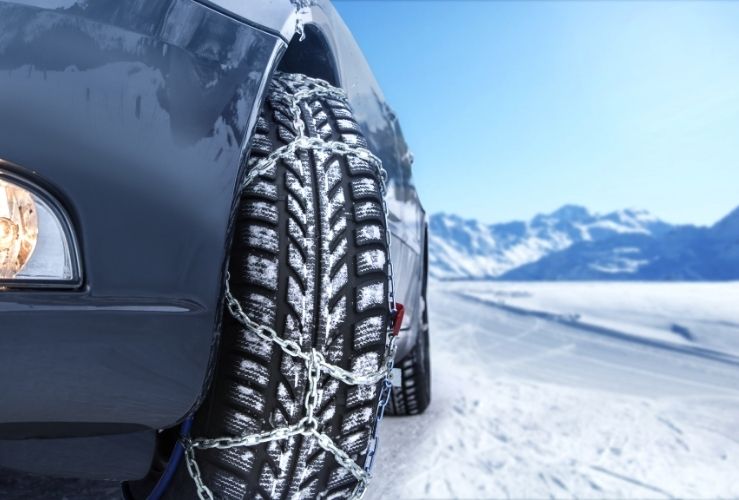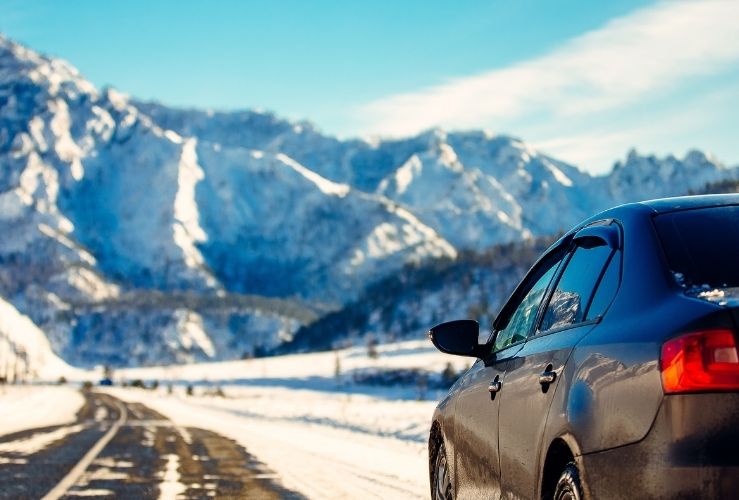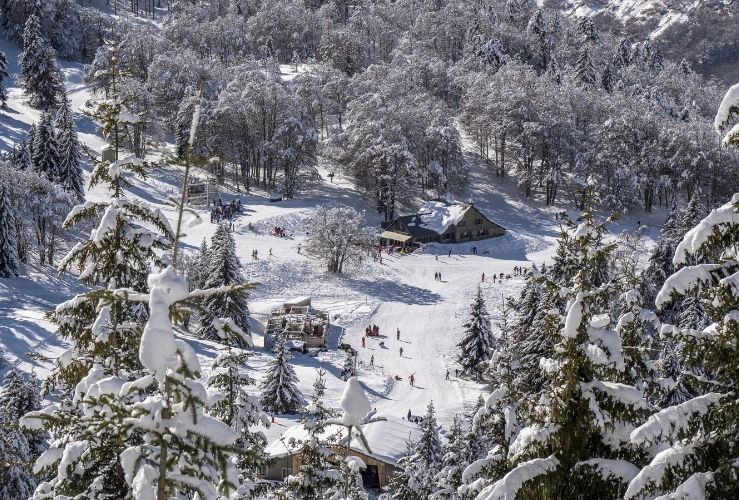For fans of skiing and snowboarding who like to journey to Europe to enjoy their winter sports, driving is often the cheapest way.
If you have your own winter sports gear then it is often costly to transport it by aeroplane. Additionally, it is generally true that the further your chalet is from the ski resort then the cheaper it is. Therefore, having your car available to you will be useful for travelling around.
However, you must be properly prepared if you are planning to drive through the snow and ice of a ski resort.
When driving with only summer tyres, it is difficult to maintain traction in snowy, icy and cold conditions. Making turns is particularly tricky and you could find your car still sliding forward even when you have moved your steering wheel around.
Coming equipped with cold weather tyres and snow chains is essential so it is important to have a little knowledge about these.
To make your European road trip as stress free as possible we also recommend that you ensure that you have appropriate European breakdown cover in place. Doing so will give you peace of mind, knowing that your vehicle is covered should it run into difficulties in Europe,

Countries where winter tyres are mandatory
In a number of countries it is a legal requirement to have cold weather tyres on your car, while in others it is only recommended. In certain cases, it is only mandatory during certain times of year.
Some countries allow particular provinces to dictate whether or not drivers legally need to have cold weather tyres.
Among the countries where winter tyres are mandatory in certain situations are Austria, Finland, Germany, Italy and Sweden.
Meanwhile, they are recommended in Switzerland, Andorra and Norway.
It's a rule that is entirely in the interest of safety.
The advantage of cold weather tyres
As the name suggests, cold weather tyres are much better for gripping the road when the temperature drops and surfaces get icy. This is due to the compound that the tyres are made up of as well as the difference in the tread.
Summer tyres typically have around 200 grooves, while winter tyres have approximately 1,500.
Thanks to the high silica content in the tread rubber compound and tread pattern, cold weather tyres are still flexible when temperatures fall below seven degrees C.
You must have all four wheels fitted with winter tyres, otherwise this will affect the stability of your car.
While winter tyres are brilliant in cold conditions, understand that they will slow up your speed a bit and will be a bit more demanding on your fuel.

Countries where snow chains are mandatory
Some countries require you to carry snow chains with you so that you can put them on your tyres when you get near ski resorts and into snowy, high altitude areas.
Countries where it is mandatory for drivers to carry snow chains include Andorra, Austria, France, Germany, Italy, Norway and Switzerland.
Again, these laws are in place for safety reasons.
The advantage of snow chains
Snow chains are designed to ensure your wheels can still grip the road when you are crossing a thick layer of snow or ice. This is because they use the weight of the vehicle to break through ice, making roads less slippery and easier to manage.
They are sold in pairs and, while one pair can make a big difference when applied to the driven wheels, two pairs are best.
Using snow chains on your vehicle
There must be enough clearance between your tyres and wheel arches if you are to fit snow chains.
Don't put snow chains on prematurely either, they can only be used where the road is protected by snow and ice.
Even with the chains on, do not drive too fast or else you may still find yourself in difficulty.
Try not to exceed 30 mph in general, make sure you slow down for bends and try not to accelerate or brake harshly.
Additionally, be sure to check your snow chains to make sure the tension is correct and also for wear and tear.

Driving to Ski Resorts in France
France is a particularly popular destination for fans of skiing and snowboarding to drive to during the winter months.
The ease of crossing the channel by car (Link to blog), and the extensive range of ski resorts located within a relatively close distance of Calais make it the ideal drive ski holiday destination.
Driving to ski resorts in the French Alps from Calais
The Alps offer longer and more complex runs than the Pyrenees.
Ski resorts closest to Calais are located in the Grand-Massif, which features over 250km of runs.
Driving to Chamonix - The drive from Calais takes around 7 hours, 30 minutes.
Driving to Tignes - Takes around 9 hours and 30 minutes to drive from Calais.
Driving to Val Thorens - The drive from Calais will take around 8 hours, 40 minutes

Driving to ski resorts in the Pyrenees from Calais
The Pyrenees provide numerous skiing opportunities for all ranges and ages from beginners’ grade (green) all the way up to black runs.
Driving to Barèges - The drive time from Calais takes around 9 hours, 30 minutes.
Driving to Superbagnère – Driving from Calais takes around 11 hours, 30 minutes.
Driving to ski resorts in Auvergne from Calais
Driving to Clermont-Ferrand - The drive from Calais will take on average 6 hours, 40 minutes.
Driving to Isère - From Calais the drive is around 8 hours.
Looking at driving to ski resorts in France? Then we also recommend checking out our handy blog on driving in France
For European breakdown recovery, get a quote online today via our European breakdown cover page.




